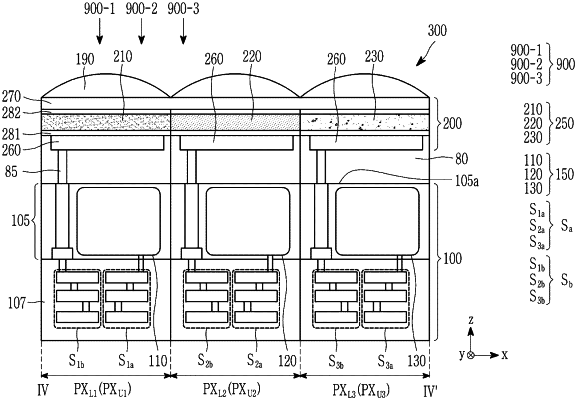| CPC H01L 27/14621 (2013.01) [H01L 27/14607 (2013.01); H01L 27/14618 (2013.01); H01L 27/14643 (2013.01)] | 34 Claims |

|
1. An image sensor configured to obtain an image based on combining image signals obtained based on photoelectric conversion of incident light in a first wavelength spectrum of a visible wavelength spectrum, a second wavelength spectrum of the visible wavelength spectrum, and a third wavelength spectrum of the visible wavelength spectrum, the image sensor comprising:
a substrate; and
a plurality of wavelength separation filters on the substrate, the plurality of wavelength separation filters arranged along an in-plane direction of the substrate, the in-plane direction of the substrate extending in parallel with an upper surface of the substrate,
wherein the plurality of wavelength separation filters includes
a first wavelength separation filter configured to
selectively transmit the incident light in the first wavelength spectrum, and
photoelectrically convert the incident light in at least one of the second wavelength spectrum or the third wavelength spectrum,
a second wavelength separation filter configured to
selectively transmit the incident light in the second wavelength spectrum, and
photoelectrically convert the incident light in at least one of the first wavelength spectrum or the third wavelength spectrum, and
a third wavelength separation filter configured to
selectively transmit the incident light in the third wavelength spectrum, and
photoelectrically convert the incident light in at least one of the first wavelength spectrum or the second wavelength spectrum.
|